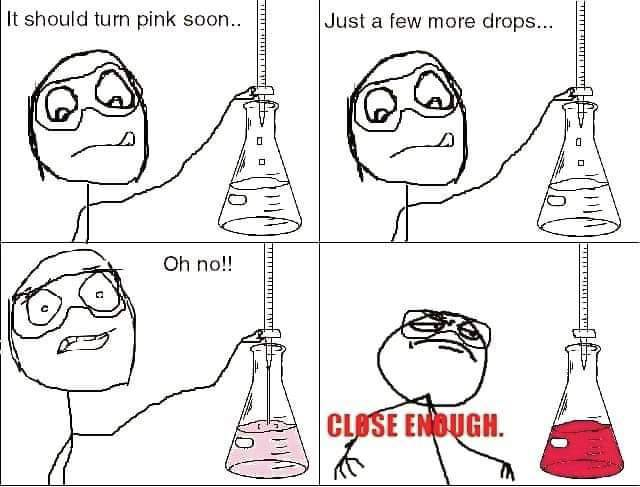this post was submitted on 06 Feb 2025
375 points (96.1% liked)
Science Memes
12071 readers
1582 users here now
Welcome to c/science_memes @ Mander.xyz!
A place for majestic STEMLORD peacocking, as well as memes about the realities of working in a lab.

Rules
- Don't throw mud. Behave like an intellectual and remember the human.
- Keep it rooted (on topic).
- No spam.
- Infographics welcome, get schooled.
This is a science community. We use the Dawkins definition of meme.
Research Committee
Other Mander Communities
Science and Research
Biology and Life Sciences
- [email protected]
- [email protected]
- [email protected]
- [email protected]
- [email protected]
- [email protected]
- [email protected]
- [email protected]
- [email protected]
- [email protected]
- [email protected]
- [email protected]
- [email protected]
- [email protected]
- [email protected]
- [email protected]
- [email protected]
- [email protected]
- [email protected]
- [email protected]
- [email protected]
- [email protected]
- [email protected]
- [email protected]
- !reptiles and [email protected]
Physical Sciences
- [email protected]
- [email protected]
- [email protected]
- [email protected]
- [email protected]
- [email protected]
- [email protected]
- [email protected]
- [email protected]
Humanities and Social Sciences
Practical and Applied Sciences
- !exercise-and [email protected]
- [email protected]
- !self [email protected]
- [email protected]
- [email protected]
- [email protected]
Memes
Miscellaneous
founded 2 years ago
MODERATORS
you are viewing a single comment's thread
view the rest of the comments
view the rest of the comments

You ought to get the balance right for things to change the way you like.
Titration is a great example of using the inverse. You get the colour by creating the balance. Then you can calculate the unknown side from the balance with the known side.
Now you can use the knowledge that your your base/acid is of a certain concentration to get the reaction you want to do right.
As for the specifics, once you get to organic chemistry in Uni it doesnt connect to make sense either, unless you really dive into the deep end of it.
i don't understand this reply.
You know how old scales worked by putting weights you know on one side, until things got balanced with the weight of the item you want to measure?
You do the same, but with acid and base, where you know the "weight" of one side of it.
i'm saying i don't understand the reply in the context of what i wrote. it may be a difference in terminology, but when i said "balance reactions" i was talking purely about on paper. we got a bunch of formulas and were to fill in the result like a multiplication table. i don't know if i've ever had to do that in practice. labs were always just "n moles of chemical a, n moles of chemical b, observe the precipitation" over and over again. it was only years after school that i realized that precipitation occurs when a solution is saturated.